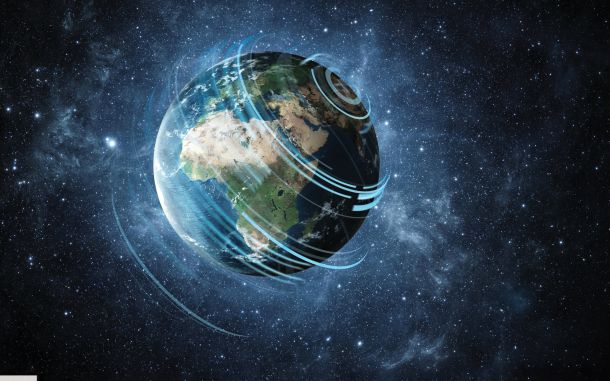Science Square (Issue 149)

In This Article
-
Will et al. Indigenous noble gases in the Moon’s interior. Science Advances, Aug 2022.
-
Andrijevic et al. Cellular recovery after prolonged warm ischaemia of the whole body. Nature, August 2022.
-
Liu et al. Microbial biofilms for electricity generation from water evaporation and power to wearables. Nature Communications, July 2022.
More Evidence that the Moon Came from the Earth
Will et al. Indigenous noble gases in the Moon’s interior. Science Advances, Aug 2022.
Humankind has always been fascinated with the Moon and studying it for nearly five centuries since Galileo. A recent discovery now adds new evidence to the currently favored "Giant Impact" theory which hypothesizes that the Moon was formed by a massive collision between Earth and another Mars-sized celestial body around 4.5 billion years ago. A group of researchers examined six samples of lunar meteorites collected in Antarctica using an exceptionally sensitive mass spectrometer and found that the meteorites contained noble gases like Neon and Helium, consistent with those found in the Earth’s mantle. Researchers proposed two possible scenarios for how the noble gases became trapped in the Moon’s interior. In the first scenario, impactors got mixed with the lunar mantle during cooling of the magma oceans to solidify over few million years of the Moon’s formation. In the second scenario, the Moon has been formed from a debris field surrounding the Earth where noble gases were directly mixed into the Moon’s interior mass. Discovery of noble gases on the moon may also inform us about its water content, too. If these gases are still there, then water could also been present in the Moon’s interior. Such water resources could be an invaluable resource for future human missions. More broadly, this study suggests that a wide variety of life-forming material can survive giant impacts early in a planet’s life. We now could make more reliable models of how planets and solar systems form and even how life is originated on the Earth.
Restoring cell functions after death?
Andrijevic et al. Cellular recovery after prolonged warm ischaemia of the whole body. Nature, August 2022.
Organ transplantation is an extremely complicated medical process. There is a massive shortage of donor organs. Waiting lists are long. Even if a patient is lucky to match with a donor organ, getting that organ before it dies through cell damage has been a big challenge. A new technology may offer a solution to extend the time that donor organs survive. A group of researchers has recently developed a technology called OrganEx, which can restore cellular activity even after death. Very shortly after the death of an organism, all cells start to die and organs begin to fail. The researchers worked with one hundred pigs to see whether cellular structures could be saved, or cell damage could be reversed, when OrganEx is applied after death. OrganEx has two major components. First is a device that simulates the heart and lung function by pushing a mix of blood and a drug cocktail to the organs. Second is the drug cocktail made of 13 chemical compounds. One hour after death, the pigs were hooked up to the OrganEx machine which pumped the cocktail to the animal's organs for six hours. The results were striking; OrganEx could restore critical cell functions after death. While this is a huge step for organ preservation, researchers still have to make more tweaks for the technology to be used in humans. Once fully developed, OrganEx is expected to keep organs outside the body for long-term or transported longer distances.
Sweat-powered wearable electronic devices
Liu et al. Microbial biofilms for electricity generation from water evaporation and power to wearables. Nature Communications, July 2022.
Researchers have developed a biofilm that sticks to the skin like a Band-Aid to harness sweat for electricity that could power wearable devices. The biofilm is made using a type of bacteria called “geobacter sulfurreducens” known for its ability to produce electricity. In this biofilm design, bacteria convert energy from evaporation into electricity by using the moisture on a person’s skin. Most strikingly, researchers found that the biofilm bacteria do not need to be fed because they are dead! They do not need to be alive to produce electricity. The biofilm consists of thin sheets of bacteria colonies (thickness less than 0.1 millimeter) that is sandwiched between two mesh electrodes and sealed with a soft, sticky biopolymer to enable it to grip to the skin. Sticking this biofilm on your skin is like plugging in a battery. This technology has potential to revolutionize wearable electronics by solving the major problem of power supply. Moreover, this is a real green energy-driven device made naturally by the microbes and devoid of any unsustainably produced materials and toxic waste byproducts. The current version of the biofilm can produce enough energy to power small devices such as medical sensors or personal electronics, but the researchers hope to explore larger films that can power even more sophisticated devices.








